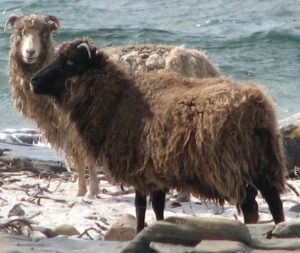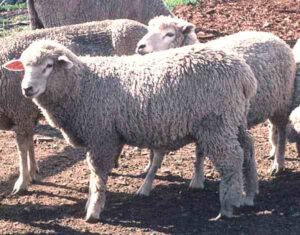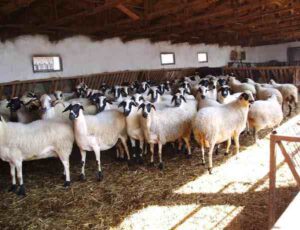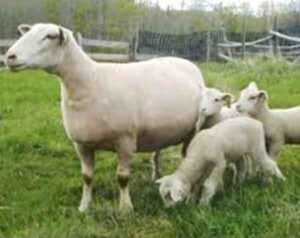The Vendeen sheep is a breed of domestic sheep which was developed by crossing local ewes with Southdown rams in the early nineteenth century.
It was actually originated near Vendée in western France, and it is also known as Mouton Vendéen. It is raised mainly as a meat breed and it is known for it’s muscularity and ability to produce large litters of lambs.
The breed is noted for the production of high quality lamb carcasses. Read some more information about this sheep breed below.
Vendeen Sheep Characteristics
Vendeen sheep are a medium sized animal with a fine, medium-length wool. They have faces and legs of dark brown or gray hair. Both rams and ewes are naturally polled, that means they have no horns.
Comparisons in performance between the Vendeen and the Texel showed the Vendeen sheep having larger litter size, older at sexual maturity and a longer lambing interval.
These two sheep breeds are relatively equal in muscularity. But the Vendeen exhibited a lower wool yield, daily gain, milk yield and carcass leanness. Photo and info from ansi.okstate.edu and Wikipedia.
Uses
The Vendeen sheep is a meat sheep breed. It is raised mainly for meat production. But the breed is also good for producing fine quality wool.
Special Notes
The Vendeen sheep are a strong and hardy breed. They are actually noted for the production of high quality lamb carcasses and ability to produce large litters of lambs.
They are also good for wool production, and they produce a fine, medium-length wool. Average fleece weight for the breed is 2-5 kg with a staple length of 4-6 cm.
The spinning count of the fleece is 56’s to 60’s. Wool of the Vendeen sheep is used for hand-knitting wools and high quality fabrics such as hosiery, dress fabrics and flannel. However, review full breed profile of this breed in the following chart.
| Breed Name | Vendeen |
| Other Name | Also known as Mouton Vendéen |
| Breed Purpose | Meat, wool |
| Special Notes | Strong and hardy, noted for the production of high quality lamb carcasses and ability to produce large litters of lambs, good for wool production, excellent meat quality |
| Breed Size | Medium |
| Horns | Polled |
| Climate Tolerance | Native climates |
| Color | Light brown |
| Rarity | Common |
| Country/Place of Origin | France |






